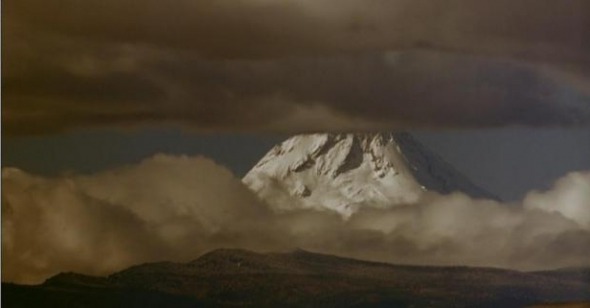It’s undeniable that Gus Van Sant is currently enjoying something of a career renaissance after enduring the late Nineties in the wilds of declining critical approbation and varying commercial prospects. Yet, why does this filmmaker, whose work was ostensibly some of the most artistically viable during the most formative era of our film consciousness, and whose taste has seemingly evolved along with our own aesthetic refinements (we were discovering Béla Tarr around the same time that Van Sant was), leave so many of us so cold? Van Sant is an artist whose career has been more controversial than it would initially appear, whose genre-hopping has been tagged as opportunistic as often as visionary and whose aesthetic has been as malleable as putty—what better way to try and pierce the core of a wholly unique (if not wholly successful, in our eyes) oeuvre than with an in-depth symposium? So, despite the consternation, or at least bored eye-rolls, of some of our staff writers, we’ve forged ahead and devoted our 21st issue to Gus Van Sant.
Of course, Van Sant remains a passionate marking point for some (Travis Hoover, in his rich, intensely personal take on My Own Private Idaho; Michael Joshua Rowin and Sarah Silver, in their stunned appreciation of Last Days' inversion of the biopic mythos), yet more often than not, our writers have returned to his films to find that their luster has worn off, they have outgrown their usefulness as counterculture fetish objects (Drugstore Cowboy) and the dialogue between studio assignments (To Die For, Psycho, Finding Forrester) and personal statements (Gerry, Elephant) seems more like the desperate grasping of an artist unsure of whether to brush in watercolors or oils. Sometimes the films hold up (Mala Noche), while others remain misfires ill-conceived from the start (Even Cowgirls Get the Blues).
Van Sant's viability, in serious question after the one-two punch of feel-good frat brothers Good Will Hunting and Finding Forrester, has resurfaced following his “Death Trilogy” and his latest, Paranoid Park. With his newfound devotion to minimalist narratives and spare aesthetics, and his savvy selection of brilliant DPs (Harris Savides, Christopher Doyle), he is again a festival darling, his wayward Nineties dalliances seen by many as nothing more than the necessary compromises made on the way to artistic nirvana. But is this return to artistry an honest reclamation of a vision tarnished by work within the studio structure, or yet another in a series of calculated turns? The “Death” films are undeniably lovely, but has the “real” Gus Van Sant finally stood up?
Yet to look at Van Sant's career monolithically, without taking his films apart one by one, does him, and film, a disservice. What do Elephant's exquisite compositions matter if we refuse to look at the implications of the film's sociopolitical opportunism in the wake of Columbine? Is Gerry's Euro-cinema cribbing not to be called out simply because there's nothing else like it in American cinema? Just because To Die For's (now dated) media satire often hits all the right targets, should we ignore its basic structural faults and muddled point of view? The things that Van Sant “does well” are the same things that limit him as an artist; yet at the same time, his struggle to define himself in the devouring world of American filmmaking has been exhilarating to watch. Where he's going we're not sure (his current dabbling in aural and visual abstraction could lead to even more radical art, or it could force him to re-embrace to the reliability of narrative), but even if we don't always like it, we'll always keep watching.
